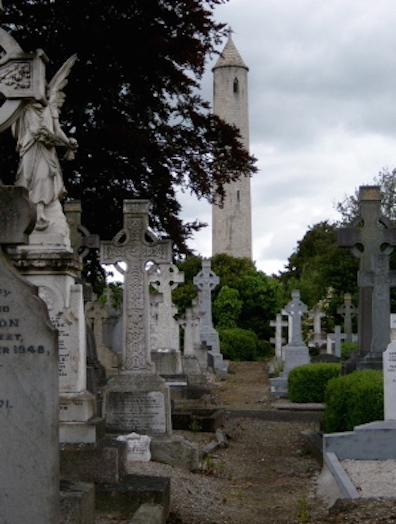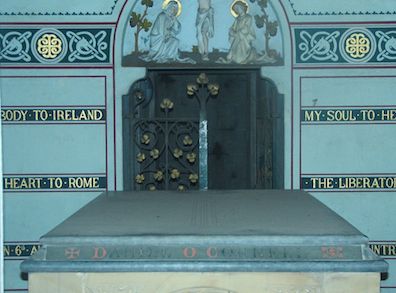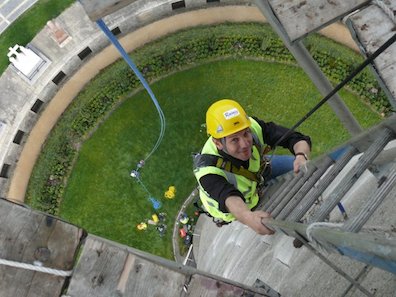Simon Dedalus remarks on "The O'Connell circle," while Jack
Power sends his gaze "up to the apex of the lofty cone."
Daniel O'Connell's body (sans
heart) has been buried in two different places: for the
first two decades in a raised circle of earth near the center
of the Glasnevin cemetery, and afterwards in a tower near the mortuary chapel
on the edge of the cemetery.
Since these two sites are not adjacent, it seems possible
that Joyce made a mistake in having two characters refer to
them as if they are. Another possibility is that Dedalus may
be referring to the grounds around the tower, rather than to
the raised circle in the center of the cemetery. As the last
of the photos here shows, the tower is surrounded by a
circular patch of turf, with a circular path at its
circumference. Perhaps this is what Dedalus calls the "The
O'Connell circle"?
In 1869 O'Connell's remains were moved from the raised circle
at the center of the cemetery to a crypt at the base of a
168-foot monument, modeled on medieval Irish round towers,
that had been under construction since 1855. Such
glorification befits this champion of Catholic rights who
worked to establish a cemetery in which Catholics and
Protestants alike could be buried with the full rites of their
respective faiths.
The tower originally housed spiral stairs allowing visitors
to climb to the top, but it was bombed by loyalists in 1971,
perhaps in reprisal for the 1966 bombing of Nelson's pillar
by the IRA. The three-foot-thick granite walls of the tower
survived, but the staircase was destroyed. The Glasnevin Trust
has raised funds and received permission to rebuild the
stairs, in a double helix pattern that will allow people to
pass both up and down without difficulty. Since Glasnevin
itself sits at 110 feet above sea level, the view from another
150 feet up promises to be spectacular.


